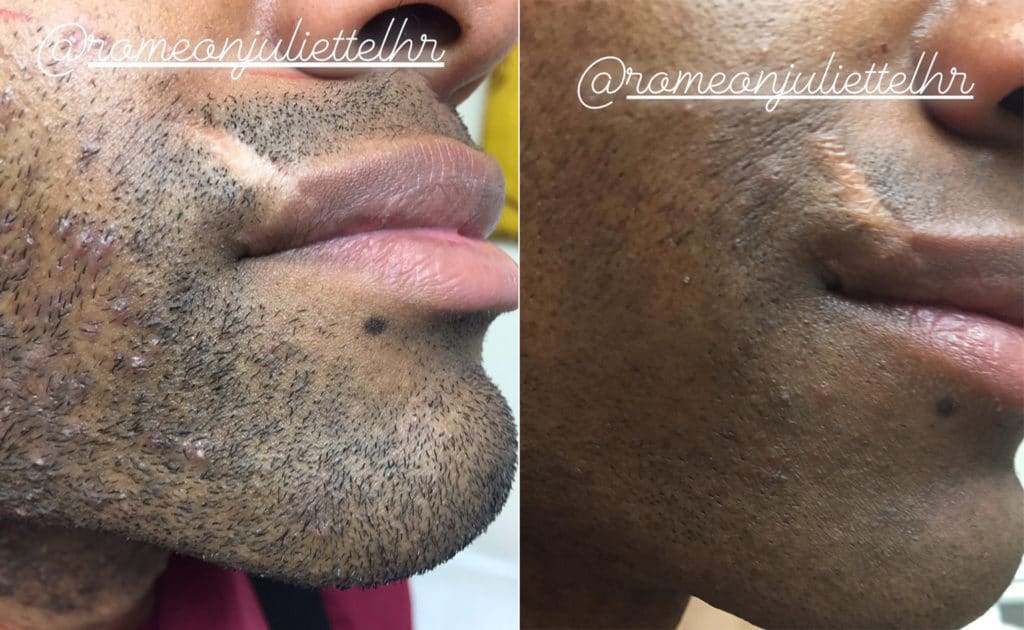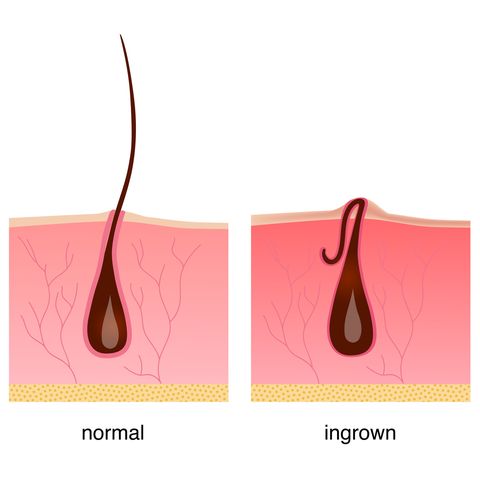
Whether you’re trying to prevent ingrown hairs or treat them, it is important to know what causes them, how to get rid of them, and how to treat them. If you have a large number of ingrown hairs, you may wish to talk to your doctor to learn the best way to treat them. Ingrown facial hair is one of the most common problems associated with shaving. It is caused by the growth of a single follicle at the back of the head of the hair.
An ingrown hair is a painful condition and should not be sucked or picked. It is also an easy way to spread an infection and leave a scar on your face. Ingrown hair can be relieved by using warm compresses or rubbing a wet washcloth on the affected area. You can also use sterile tweezers or needles to gently pull the hair out. It’s important not to scratch the skin or break it, as this can cause a bacterial infection.
An ingrown hair is a bump that forms on the skin after it is removed. It is caused by a plug of dead skin cells, oil, or bacteria that blocks a pore. Ingrown hairs develop in the follicles, and are characterized by redness, swelling, and pus. If you’re suffering from ingrown, make sure you see a doctor right away. You’ll be glad you did.
Ingrown hairs are a common problem in women and are a common condition. The American and African population are at higher risk for developing them. Nada Elbuluk, an assistant professor at NYU Langone Medical Center and a practicing physician at the Joan H. Tisch Center for Women’s Health, says that various hair removal methods can lead to ingrown hairs. There are several ways to get rid of them, but they’re best treated by an expert.
The first step to getting rid of ingrown hairs is to stop all attempts at removing the hair. Do not pull, shave, or squeeze the hair out. This will not only aggravate the skin but will also encourage infections. This is not a good way to get rid of ingrowns. Ingrown follicles can lead to infection. Fortunately, ingrown hairs are not contagious and will usually disappear on their own.
Ingrown hairs can be very painful and cause skin irritation. A doctor can diagnose ingrown follicles by examining the area. Ingrown hairs often occur in the back and on the legs. If they’re irritated, they may become red, swollen, and itchy. They may become itchy and warm, and may even turn into an abscess. If left untreated, ingrown follicles can lead to infection.

Symptoms of ingrown hairs can range from painless to painful. It can appear like a pimple and can be itchy and inflamed. Sometimes, it can resemble an infection. In mild cases, you can try not shaving for a few days, and dab some antiseptic on the affected area. If you’re unable to stop shaving and still experience ingrown hairs, you should visit a dermatologist.
Ingrown hairs can be painful and embarrassing, but they aren’t a serious condition. There are many ways to prevent and treat them. There are a few simple tips you can follow to help prevent them. The first step is to stop shaving altogether. Keeping your skin clean is the most important way to prevent ingrown hairs. If you don’t shave, you should avoid it. You can also try rubbing some antiseptic on the affected area to reduce the inflammation and discomfort.
Ingrown hairs are painful and unsightly. Some people get them regularly, and there’s nothing you can do about it if you have ingrown hairs. Fortunately, there are several ways to treat ingrown hairs that can be done at home. The health website https://palermo-store.it/
reminds you that it is important to consult your doctor before using any hair removal product. You may have to give up shaving entirely, or opt for tweezers or waxing. Laser therapy can help remove ingrown hairs by reaching deeper layers of the skin.
Ingrown hair treatment is another option. You can buy a cream containing salicylic acid to open up the skin and prevent ingrown hairs. It will also help prevent ingrown strands by eliminating the cause. However, in some cases, a prescription cream or intense pulsed light therapy is used to treat ingrown eyelashes. These products can help prevent ingrown hairs. Using these creams can reduce the risk of ingrown hairs and even treat them.